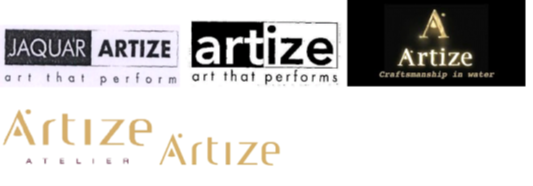Jaquar successfully asserts rights in ARTIZE mark over Villeroy Boch

- The court restrained Villeroy from using the mark ARTIS, or any other mark identical or deceptively similar to Jaquar’s ARTIZE marks
- The court concluded that Villeroy used ARTIS in a trademark sense
- ARTIZE was not descriptive of sanitaryware
In Jaquar Company Pvt Ltd v Villeroy Boch AG (CS (COMM) 777/2022), two well-known entities in the sanitaryware industrywere pitted against each other. The plaintiff, Jaquar Company Pvt Ltd, filed suit against the defendant, Villeroy Boch AG,seeking to restrain the latter from using the mark ARTIS in relation to its business. Jaquar claimed prior rights over the markARTIZE and alleged that Villeroy’s use of the ARTIS mark constituted trademark infringement and passing off.
The Delhi High Court considered the following issues in deciding whether Jaquar was entitled to a preliminary injunction.
Whether the marks ARTIZE and ARTIS were similar and whether use of ARTIS byVilleroy constituted infringement
Jaquar claimed to have obtained registrations for several ARTIZE-formative marks, including the word mark ARTIZE-BORNFROM ART in Classes 11 and 35:

The above registrations provided Jaquar with statutory rights under Section 17 of the Trademarks Act, which extended to thedevice marks. To assess similarity, the dominant features of the device marks must be considered. In this case, the word ‘Artize’emerged as the prominent feature and was entitled to protection.
Therefore, the use of the similar mark ARTIS by Villeroy would be considered as an infringement of Jaquar’s rights, particularlyas the use of the ARTIS mark would create a likelihood of confusion with Jaquar’s mark in the public’s mind.
Whether Villeroy was using ARTIS in a trademark sense
Villeroy contended that ARTIS was only a sub-brand applied to a particular range of products and never used on a standalonebasis. The mark was found only on packaging and was used to describe the products as works of art.
The court noted that the contention that ARTIS was always accompanied by the house mark VILLEROY was of no consequence.By using ARTIS, Villeroy intended the mark to act as a source identifier for a special segment of products (washbasins), so thatthese products could be distinguished from others on the market. Such use was, therefore, purely in a trademark sense.
Further, by applying for registration of ARTIS as a trademark, Villeroy acknowledged the value and distinctiveness of the markand recognised its potential to act as a source identifier for its products. Therefore, it was reasonable to conclude that Villeroyused ARTIS in a trademark sense.
Whether Jaquar’s rights were impacted by estoppel, delay and acquiescence
In an infringement and passing-off case, the marks must be weighed against one another to ascertain the similarities. The courtfound that the divergence in Jaquar’s stance before the Trademarks Registry and the court would not be sufficient to resist thissuit for infringement. Jaquar could not be estopped from exercising its statutory rights merely because it submitted to thecontrary.
In trademark law, the mere absence of legal action by the trademark owner is not sufficient to establish acquiescence. Thetrademark owner’s conduct or inaction must suggest a conscious decision to allow the other party to use the trademark. In thiscase, the facts did not indicate that Jaquar encouraged or gave Villeroy a “green signal” to use ARTIS in India.
Further, mere participation in an international exhibition where multiple entities from all over the world were present wasinsufficient to attribute knowledge and hold that Jaquar permitted Villeroy to erode its statutory rights. It could, at best, suggestthat Jaquar was aware of the global launch of products under the mark ARTIS, but this did not demonstrate knowledge ofVilleroy’s intention to use ARTIS on the Indian market, where Jaquar is the dominant player.
Whether ARTIZE was descriptive of sanitaryware and whether exclusive rightscould be claimed by Jaquar
Villeroy argued that ARTIZE was derived from the Latin word ‘artis’, meaning ‘art’, and was therefore descriptive of the goods towhich it was applied as it attempted to portray them as works of art.
The court observed that, to determine whether a trademark is generic, it must consider the connection with the goods andservices in question, the parties’ position on the market and the mark’s recognition as a source indicator. ‘Artize’ is a unique wordthat does not find mention in any language and has no meaning. It is not familiar to consumers and has been created andadopted by Jaquar to designate a special range of its products. The court opined that ARTIZE was an inherently distinctive andfanciful mark, which created a long-lasting impact on purchasers of sanitaryware.
The court further held there was no basis for considering that the mark ARTIZE was laudatory or descriptive, as it did not havean immediate or obvious connection with the character or quality of goods or services to which it was assigned.
The court concluded that ARTIZE was more suggestive than descriptive, and required some level of imagination or mentalconnection to understand its association with sanitaryware.
Conclusion
Given the above, the court restrained Villeroy from using the mark ARTIS or any other mark identical or deceptively similar toJaquar’s ARTIZE trademarks.
This article first appeared in WTR daily, June 2023.



